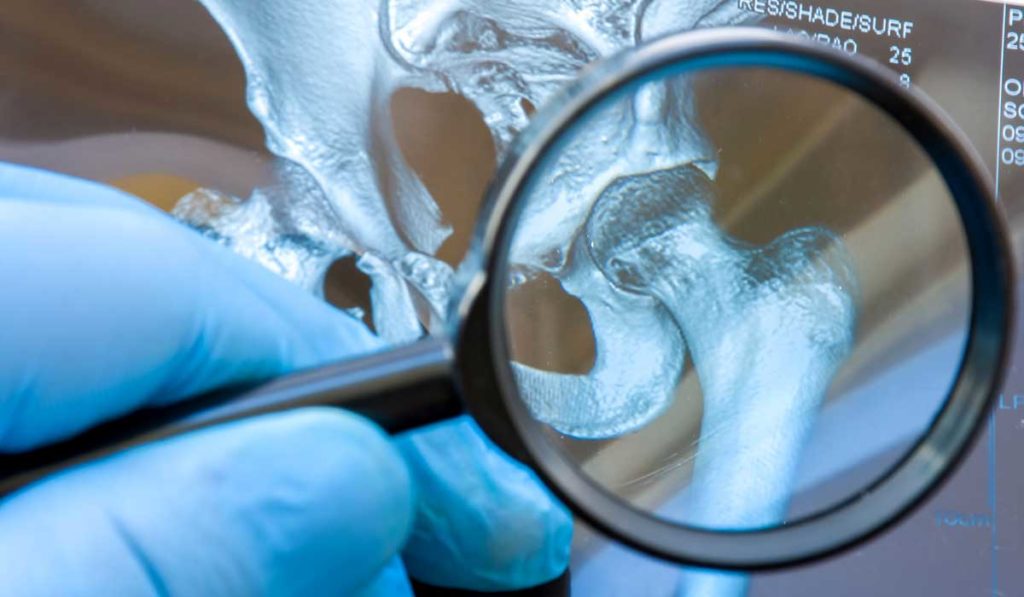Vanderbilt surgeons and infectious disease specialists have developed a protocol to rapidly confirm the location and severity of musculoskeletal infections (MSKIs) and the potential for complications such as thrombosis. The protocol applies a novel predictive algorithm based on clinical and laboratory data collected at presentation, coupled with rapid MRI.
Pediatric MSKIs, which can cause morbidity and even mortality, represent a diagnostic and management challenge due to overlap in clinical presentation with common non-infectious conditions. For orthopaedic surgeons at Monroe Carell Jr. Children’s Hospital at Vanderbilt, one in 10 ED consults is to rule out MSKI.
“Unlike a broken bone, which happens once, infection is constantly injuring new tissue; it can be equivalent to having multiple fractures at the same time every few hours. This quickly places children at greater risk of having devastating complications,” said Jonathan Schoenecker, M.D., Jeffrey W. Mast Chair in Orthopaedics Trauma and Hip Surgery at Vanderbilt. “Our team’s goal is to quickly determine if a child has an infection and its location, and treat it with antibiotics and surgery if needed.”
“Infection is constantly injuring new tissue; it can be equivalent to having multiple fractures at the same time every few hours.”
Evolution of a Protocol
The new protocol is rooted in the observation that most complications suffered by children with infections occur from a dysregulated acute phase response (APR).
In the past decade, Vanderbilt researchers¹ have studied the epidemiology of MSKIs and the heterogeneity of MSKI pathologies, in addition to the role of the APR. These studies and others informed the development of a MSKI classification system with operational definitions for severity based on the degree of dissemination.
The predictive algorithm emerged from this earlier work and stratifies MSKI severity by a non-infectious process, localized disease, or disseminated disease. Model variables tested include APR measurements: C-reactive protein (CRP), pulse, temperature, and an interaction term for pulse and temperature. CRP is the strongest predictive indicator of MSKI severity in the model.
“Using measures of the APR allows us to triage which children have a runaway response to infection, or other processes, prompting us to act much faster,” Schoenecker said. “We then can use serial APR measures to determine if we are effectively treating the infection.”
Rapid MRI for Precision Imaging
Combining APR monitoring and rapid MRI greatly changes treatment protocol, Schoenecker says. Previously, surgeons might focus on debriding the hip or knee joint – the most commonly affected areas. Rapid MRI can allow for a quick determination that the majority of the tissue infected is in the bone and/or muscle, so the surgical team can focus on debriding these other, more infected areas.
“This information not only allows the team to better determine if the child has an infection but also where it is specifically, making intervention either through surgery or intervention radiology much more precise and effective,” Schoenecker said. “We can be very precise in our approaches as we have a roadmap to the infection.”
“This information not only allows the team to better determine if the child has an infection, but also where it is specifically.”
Testing Predictive Models
Vanderbilt is a member of CORTICES, a collaboration of pediatric orthopedic surgeons and institutions dedicated to advancing evidence-based orthopaedic care. The clinical prediction algorithm is currently being tested at CORTICES institutions across the U.S.
“We’re curious to see what the data is like from various geographic regions across the country,” Schoenecker said.
Vanderbilt researchers are also interested in how commensal bacteria may turn pathogenic in MSKIs. “One of our main areas of interest in bone and joint infections in kids is the infections caused by staph, and particularly the more virulent forms of it, such as MRSA,” said Isaac Thomsen, M.D., assistant professor of pediatric infectious diseases at Vanderbilt.
Thomsen and his team at Vanderbilt have built a repository of samples from every pathogen that has caused a bone and joint infection at Children’s Hospital for the past decade. “We can now trace the evolution of infections over time and make some clinical comparisons,” Thomsen said. “We’re trying to identify the risk factors that might predict severe complications.”






